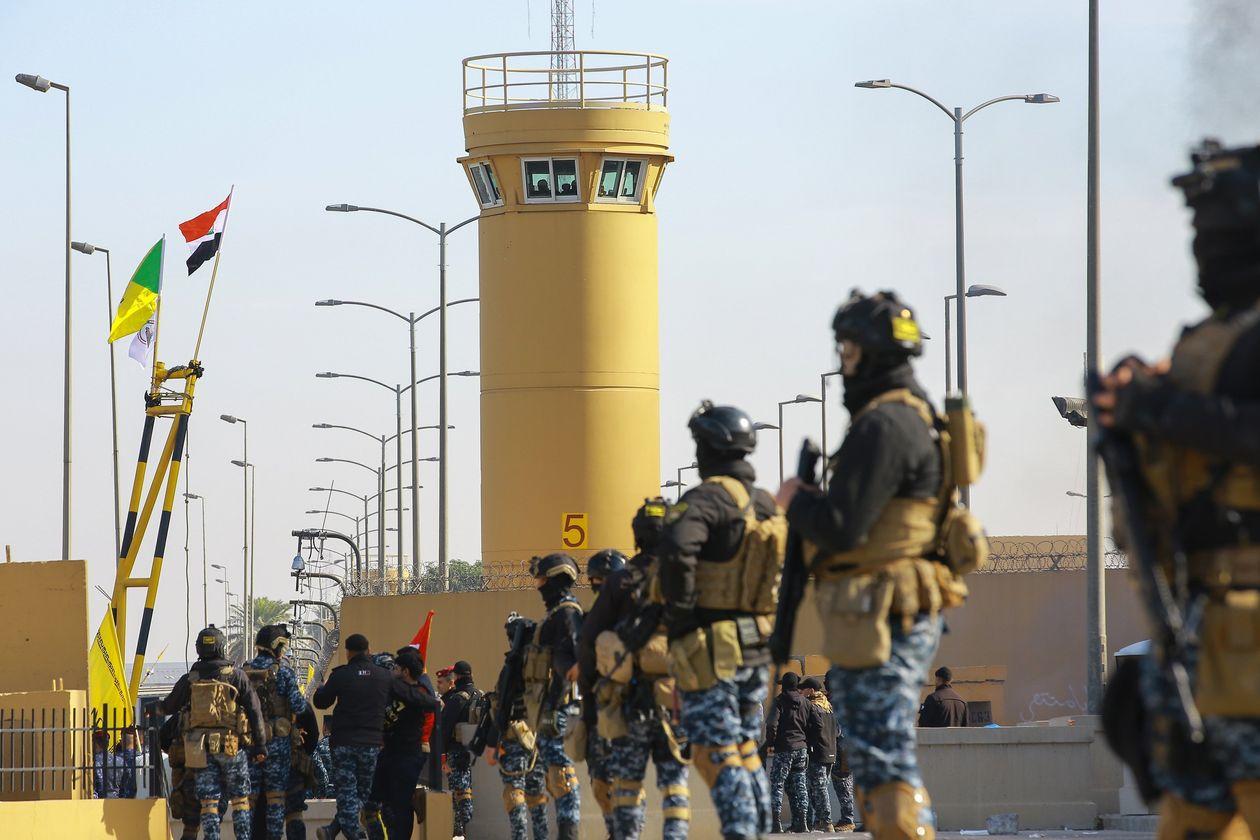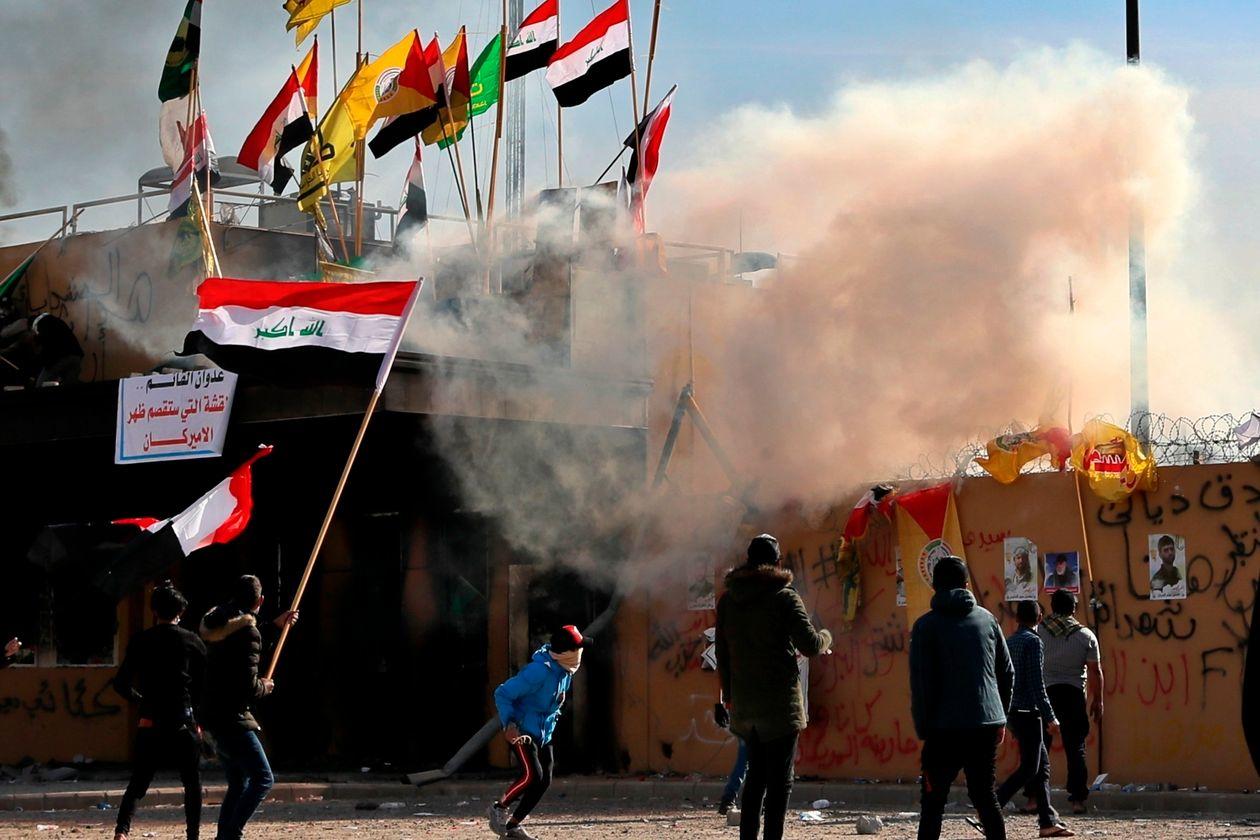Iraqi Protesters Retreat From US Embassy In Baghdad
In the end, calls for a second "Benghazi" proved grossly unfounded.
An attempt by supporters of Iran-backed militias to storm the heavily fortified US Embassy in Baghdad went into retreat Wednesday, as American troops reinforced the besieged compound and as protesters withdrew from the area after their leadership ordered the suspension of a violent challenge to American troop presence in Iraq (where US troops have been stationed for nearly two decades).
The retreat was instigated by paramilitary leaders from the Popular Mobilization Forces, which is part of the Iraqi security apparatus and an umbrella body for dozens of militia groups including factions aligned with Iran. The PMF said protesters demanding the expulsion of American troops from Iraq had delivered their message to the US.
According to the WSJ, dozens of protesters who had camped overnight on New Year’s Eve near the gates of the U.S. Embassy began to dismantle their tents following the PMF’s call to withdraw. Earlier, they had appeared to be in for the long haul, setting up portable bathrooms and a podium. The PMF said the protest site would be moved to the other side of the Tigris River, which bisects Baghdad—still within sight of the embassy. Meanwhile, Iraqi security forces took up positions around the embassy.

The withdrawal was intended "to preserve the authority of the state" and "out of respect for the government’s decision" protesters should move away from the embassy, according to the PMF, which ordered the crowds at the embassy to withdraw, claiming that their "message has been heard."
Separately, President Trump spoke to Iraqi Prime Minister Adel Abdul-Mahdi overnight and declared the embassy safe, saying the Iraqi government had “stepped up.” He blamed the assault on the U.S. outpost on Iran.
Footage from Ruptly showed protesters with Hezbollah flags withdrawing in their vehicles. It was not immediately clear from the video how many have remained at the scene of clashes, where tear gas and stun grenades were reportedly fired again on Wednesday.
“We decided to leave after our superiors received an urgent request from [Prime Minister] Abdul-Mahdi himself asking us to because... there is a lot of pressure on him now,” said a senior member of Kataib Hezbollah who declined to be named.
“Abdul-Mahdi is on our side and has been helping us a lot, so we don’t want to harm him or cause him problems,” he added.
A day earlier, supporters and members of Kataib Hezbollah and other Iran-backed militias attempted to violently force their way into the US Embassy compound located inside the heavily fortified Green Zone, but failed to break in. Enraged by Sunday’s US airstrikes against the Kataib Hezbollah militia, the crowd lit fires and pelted the embassy with stones. Shortly after, a contingent of US Marines arrived on Tuesday night to bolster security. The attack prompted the U.S. to deploy military reinforcements and exposed the power of Tehran’s allies in Iraq.

Kataib Hezbollah, which the U.S. sees as a terrorist group and a proxy for Iran, left its yellow flag flying over an outer entrance to the embassy compound on Wednesday, having earlier said it wouldn’t back down.
Earlier on Wednesday, U.S. troops fired tear gas to disperse militia supporters crowding outside the embassy for a second day as Apache helicopters flew overhead.
“We will never stop demanding to kick the Americans out of Iraq,” said a cleric from the podium in front of the embassy before the withdrawal. “We demand the Parliament approve the law of expelling the Americans.”
The assault on the U.S. Embassy however, was condemned by some Iraqi politicians, including a Sunni block that described it as a “dangerous development” that risked isolating Iraq. Parliament Speaker Mohammed al-Halbousi also said the incident was “unacceptable” and damaging to Iraqi interests.
The attack strained relations between Washington and Baghdad and revived calls for a vote in Parliament on the expulsion of U.S. troops, which returned to Iraq in 2014 to fight Islamic State. Despite their retreat from the embassy area, Iran’s allies are expected to keep pressing for a parliamentary vote on the withdrawal of U.S. troops, further undermining the U.S.’s influence in the country. Tehran, meanwhile, has shown that its allies in Iraq are stronger than the government of which they are a part.
Washington blamed Iran for orchestrating the embassy riots, and for directing militias like Kataib Hezbollah to attack its forces in Iraq. Meanwhile, Tehran has denied all responsibility, with Iranian Supreme Leader Ayatollah Ali Khamenei telling Trump that "your crimes in Iraq, Afghanistan… have made nations hate you."
As the Iraq embassy showdown turned into yet another proxy battle between Iran and the US, Iraqi Prime Minister Adel Abdul Mahdi sought to balance relations with both sides. The PM called the US airstrikes a “vicious assault that will have dangerous consequences,” but warned protesters against any aggression towards foreign embassies.
On Tuesday, Secretary of State Mike Pompeo the assault on the U.S. Embassy “should not be confused with the legitimate efforts of the Iraqi protesters who have been in the streets since October working for the people of Iraq to end the corruption exported there by the Iranian regime."
https://ift.tt/2ZFTV06
from ZeroHedge News https://ift.tt/2ZFTV06
via IFTTT




0 comments
Post a Comment